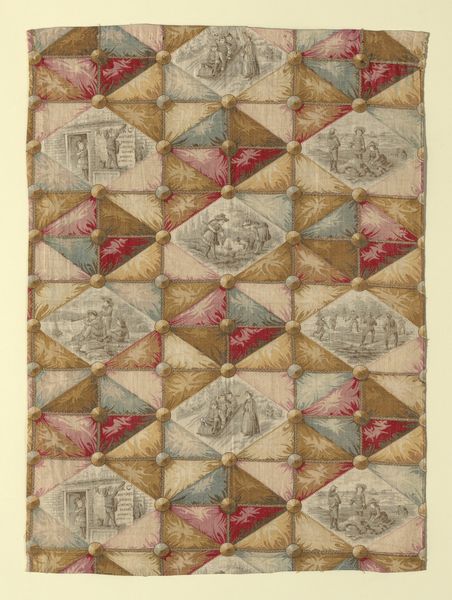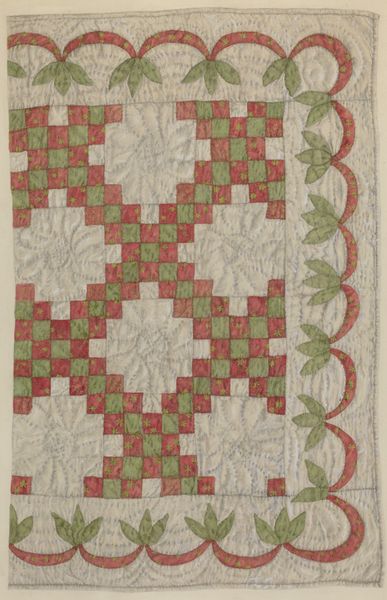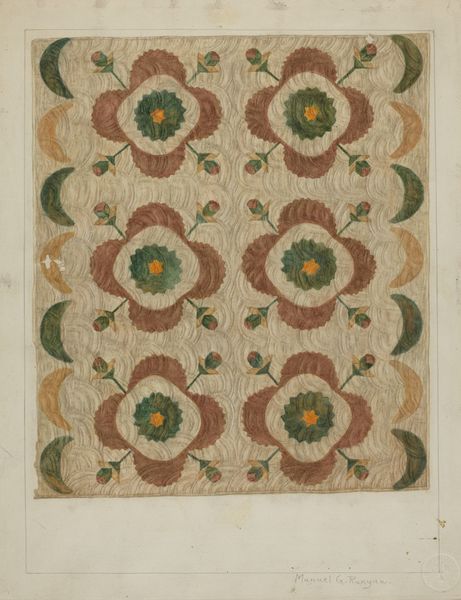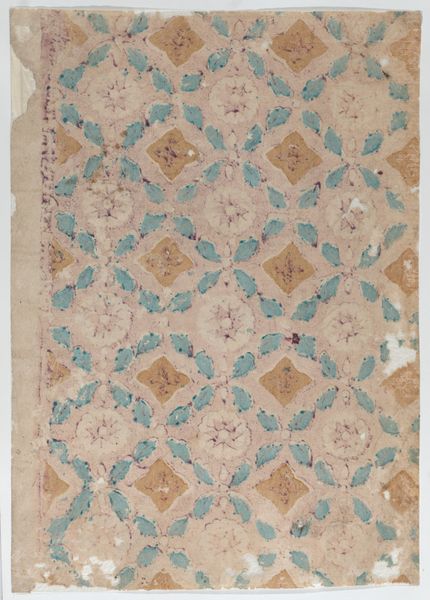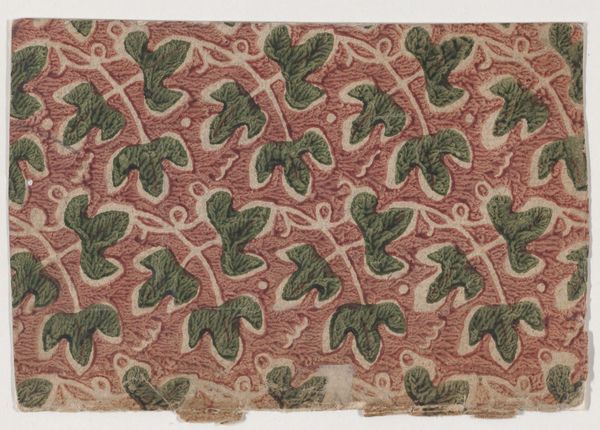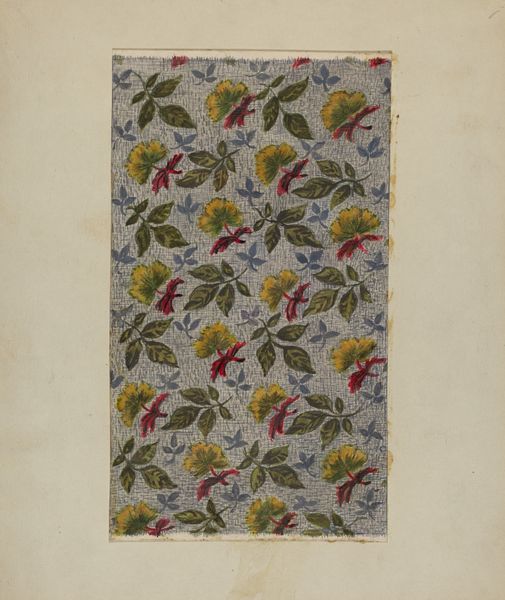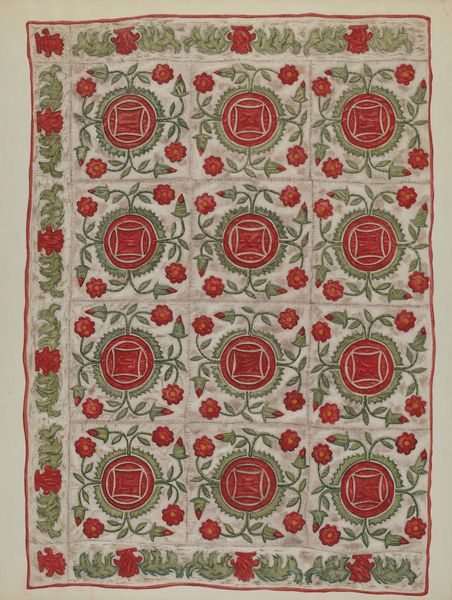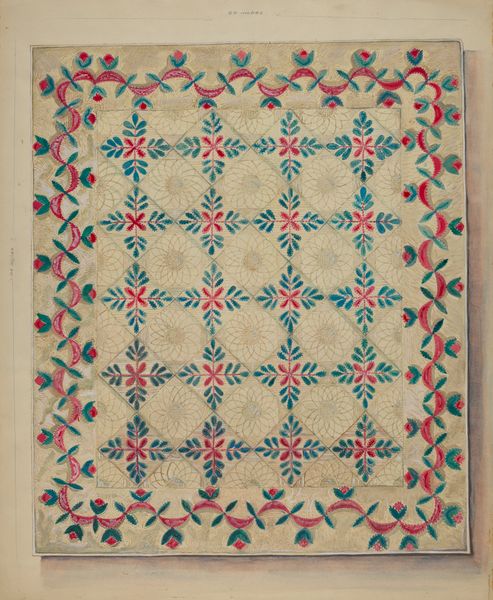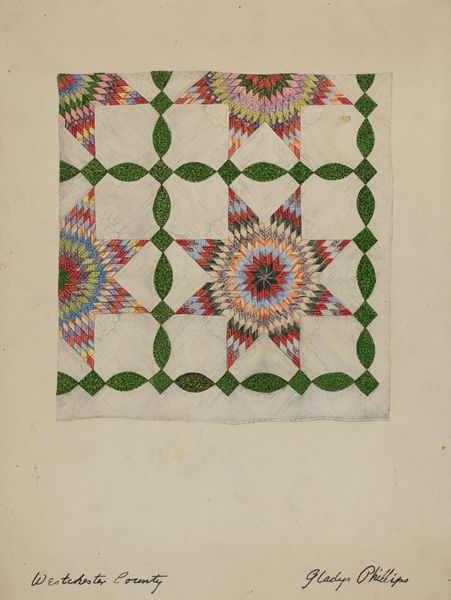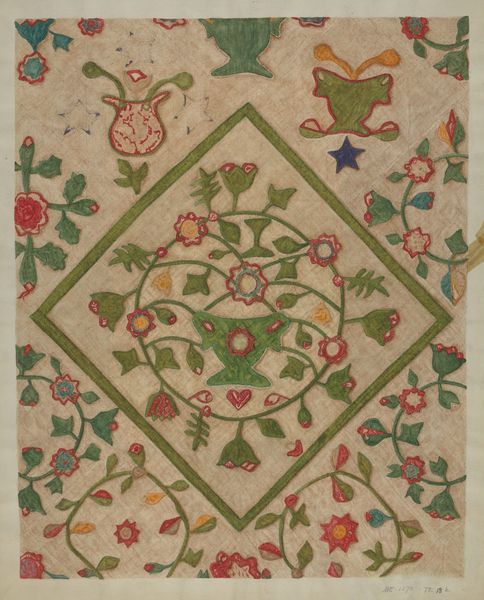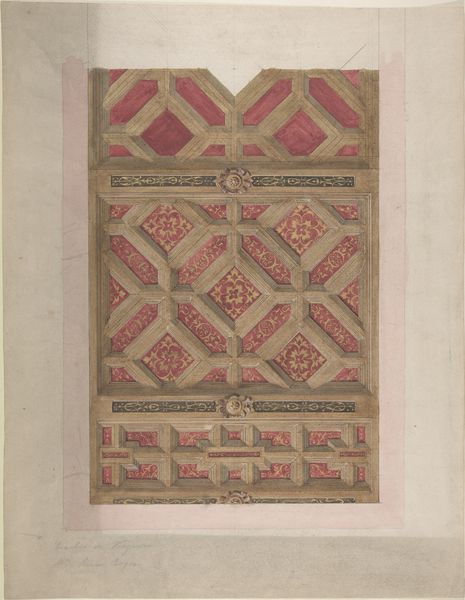
Sheet with an overall floral and geometric pattern 1800 - 1900
0:00
0:00
#
pattern heavy
#
naturalistic pattern
#
organic
# print
#
pattern design
#
organic pattern
#
geometric
#
repetition of pattern
#
vertical pattern
#
pattern repetition
#
textile design
#
imprinted textile
#
layered pattern
Dimensions: Sheet: 7 11/16 × 11 1/8 in. (19.5 × 28.2 cm)
Copyright: Public Domain
Curator: This is an intriguing pattern study created sometime between 1800 and 1900. The Metropolitan Museum classifies it as a “Sheet with an overall floral and geometric pattern,” author unknown. The pattern integrates floral sprigs within an isometric grid. Editor: The pastel colors, geometric foundation, and delicate sprigs almost feel contradictory, as if opposing orders are brought together. At first glance, I see it as unexpectedly soothing—is that strange? Curator: Not at all. The overall harmony stems from the disciplined repetition, which produces a layered reading of visual echoes across what might very well be a textile sample or fragment. We read left to right, top to bottom. How might this textile’s cultural origins alter the narrative? Editor: Right, consider its place of origin and the social milieu of the era. A textile like this might indicate something about its creator or user, from their aesthetic preferences to their socioeconomic status. Mass-produced fabrics in the 19th century democratized certain designs while potentially erasing specific cultural significances. Do the geometric patterns present a colonial or imposed standard? Curator: That tension certainly resonates. I also ponder how this "anonymous" piece of applied art might function in the memory palace of interior decoration—especially concerning gendered space and women artists dismissed or excluded in this same period. Think of bed linens or parlor upholstery where many narratives are literally embedded. Editor: I imagine how labor intensive this would have been. Who dyed the fabric? What are the socio-political implications and the hidden exploitation? This isn't just an "anonymous pattern," it represents real people, likely marginalized and excluded. We can speculate about the unacknowledged hands that labored to produce designs like this. Curator: Those absences give it greater poignancy. Consider what survives culturally. This anonymous work whispers of memory—a faint signal of identity—but a record nonetheless, one that offers an alternative genealogy. Editor: Exactly, remembering to unpack and politicize how visual culture affects our sense of identity. Perhaps designs, even pleasant-seeming ones, perpetuate unequal power structures and it benefits us to identify these to create equality. Curator: An astute consideration. I look forward to exploring this dialogue between aesthetic appreciation, art history and activist practice more deeply. Editor: Agreed. Every textile harbors untold narratives woven into the threads, and now more of these stories might surface in ways that instigate change.
Comments
No comments
Be the first to comment and join the conversation on the ultimate creative platform.

